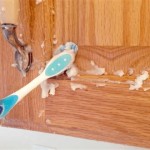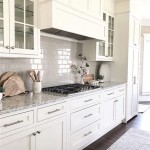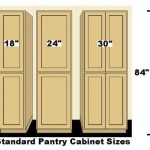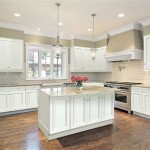Kitchen Cabinet Molding and Trim: Essential Elements for a Refined Kitchen
The kitchen, often considered the heart of the home, deserves special attention to detail and aesthetic appeal. Kitchen cabinet molding and trim play a crucial role in enhancing the overall look and functionality of this vital space. These elements add character, texture, and depth, transforming ordinary cabinets into focal points of style.
Types of Cabinet Molding
Selecting the right type of cabinet molding is essential to complement the kitchen's design and personal preferences. Common molding styles include:
- Cove Molding: A concave curve that adds a subtle touch of elegance.
- Ogee Molding: A combination of a convex and concave curve, creating a more ornate look.
- Crown Molding: A large, elaborate molding that extends above the cabinets, creating a grand statement.
- Base Molding: Installed at the bottom of the cabinets, adding weight and stability to the design.
- Light Rail Molding: A narrow molding installed between the upper and lower cabinets, concealing under-cabinet lighting.
Types of Cabinet Trim
Cabinet trim serves both functional and aesthetic purposes. It can include elements such as:
- End Panels: Conceal the exposed sides of cabinets at the end of a run.
- Filler Panels: Fill gaps between cabinets and walls or appliances, creating a more cohesive look.
- Toe Kicks: Cover the space between the bottom of the cabinets and the floor, preventing debris from accumulating and providing a kick space for the user.
- Scribing: A technique used to trim molding to fit perfectly against uneven walls or ceilings.
Choosing the Right Molding and Trim
When selecting kitchen cabinet molding and trim, consider the following factors:
- Kitchen Style: Match the molding and trim to the overall style of the kitchen, whether traditional, contemporary, or transitional.
- Cabinet Material: Choose molding and trim that complements the cabinet material, such as wood, laminate, or painted finishes.
- Cabinet Color: Consider the color of the cabinets to create a cohesive or contrasting look.
- Scale and Proportion: Select molding and trim sizes that are proportionate to the size of the cabinets and room.
Installation Tips
For a professional finish, follow these installation tips:
- Use a brad nailer: Ensure secure attachment without damaging the molding.
- Miter joints: Cut molding at 45-degree angles for precise corner connections.
- Fill gaps: Use wood filler to fill any nail holes or gaps for a seamless finish.
- Caulk around edges: Prevent moisture penetration and enhance the seal.
Conclusion
Kitchen cabinet molding and trim are indispensable elements that elevate the design and functionality of this important room. By selecting and installing the right molding and trim, you can create a kitchen that is both beautiful and practical, a space that becomes the envy of all who enter.

Adding Crown Molding To Kitchen Cabinets Young House Love

10 Types Of Kitchen Cabinet Molding For Your Home

Adding Moldings To Your Kitchen Cabinets Remodelando La Casa

7 Types Of Cabinet Moldings And How To Use Them Properly

Diy Kitchen Cabinet Upgrade With Paint And Crown Molding

11 Kitchen Cabinet Crown Molding Ideas For Your

3 Ways To Enhance Your Kitchen With Crown Molding

Adding Moldings To Your Kitchen Cabinets Remodelando La Casa

Crown Molding For Kitchen Cabinets Fine Homebuilding

9 Molding Types To Raise The Bar On Your Kitchen Cabinetry
Related Posts








